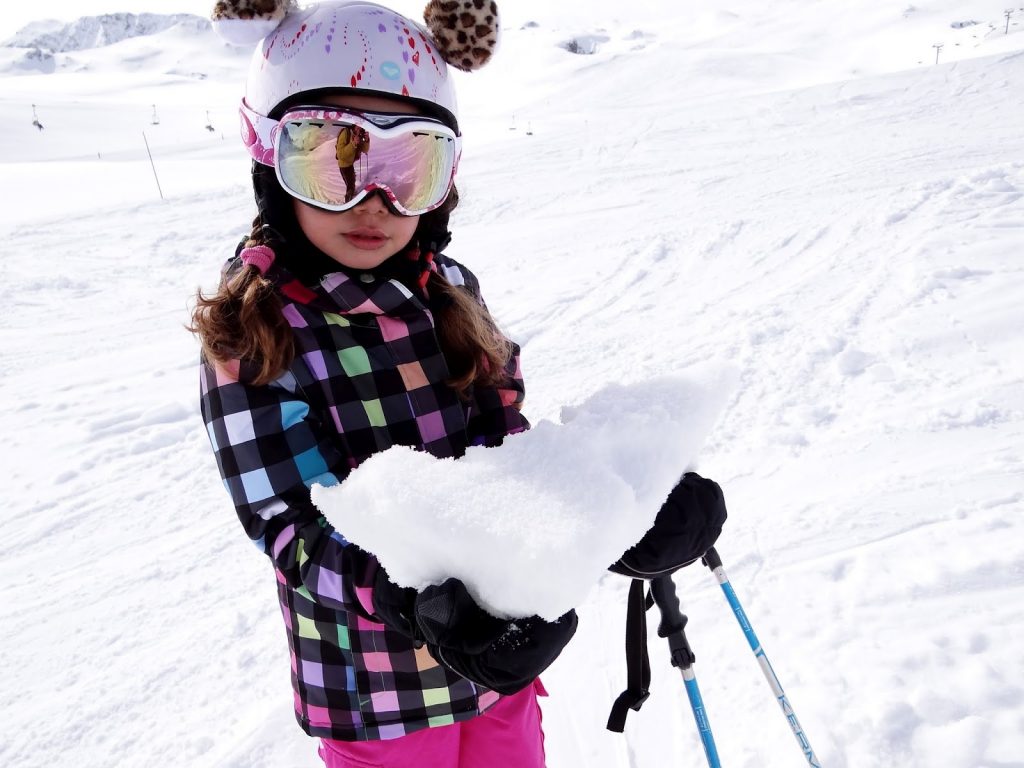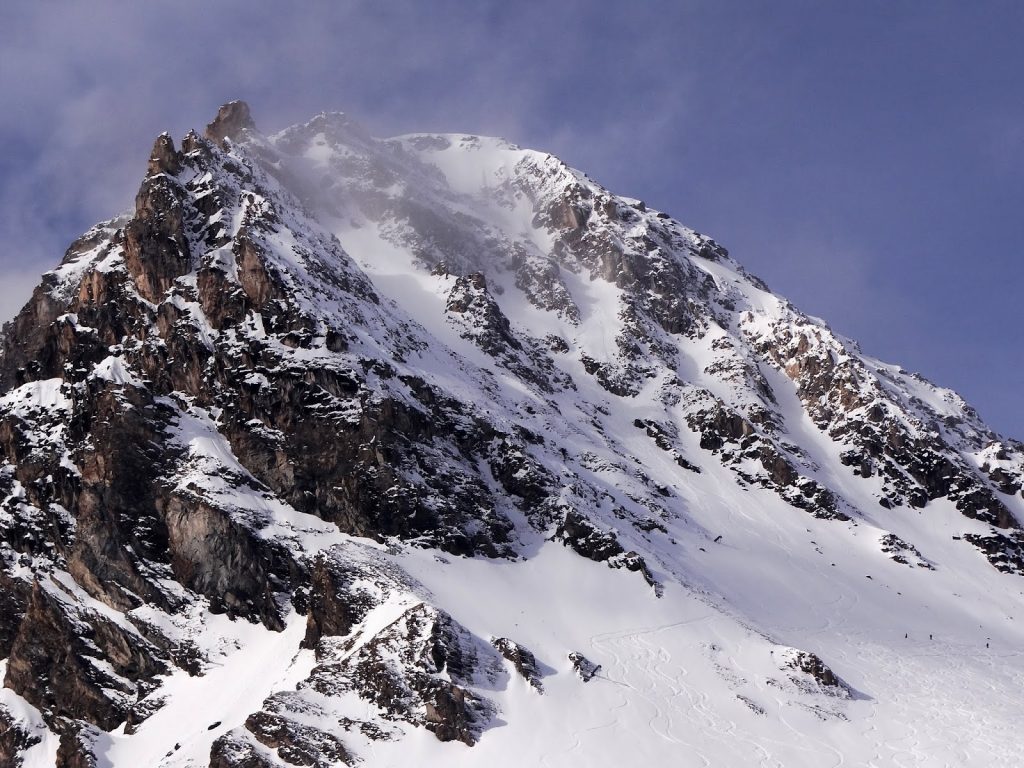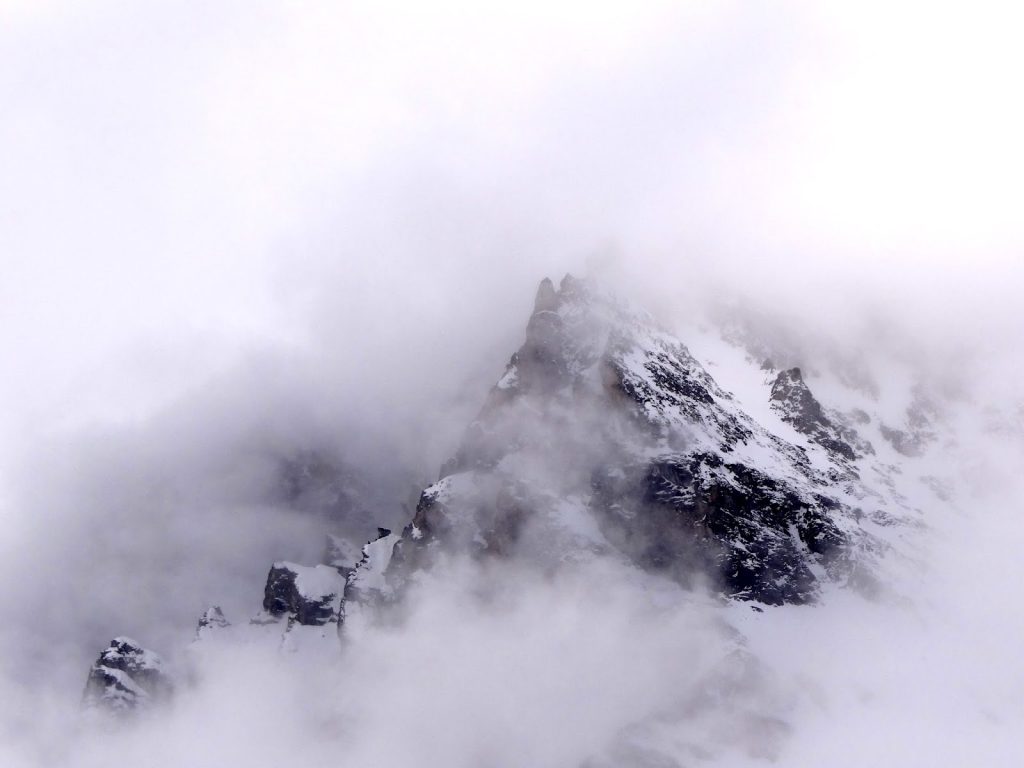While warming up on the piste I asked Derin how many things she had learned this week and we came up with a list of 10 main things in a few seconds. When we set off I shouted back to her to work on being perpendicular – that one had not been on the list.
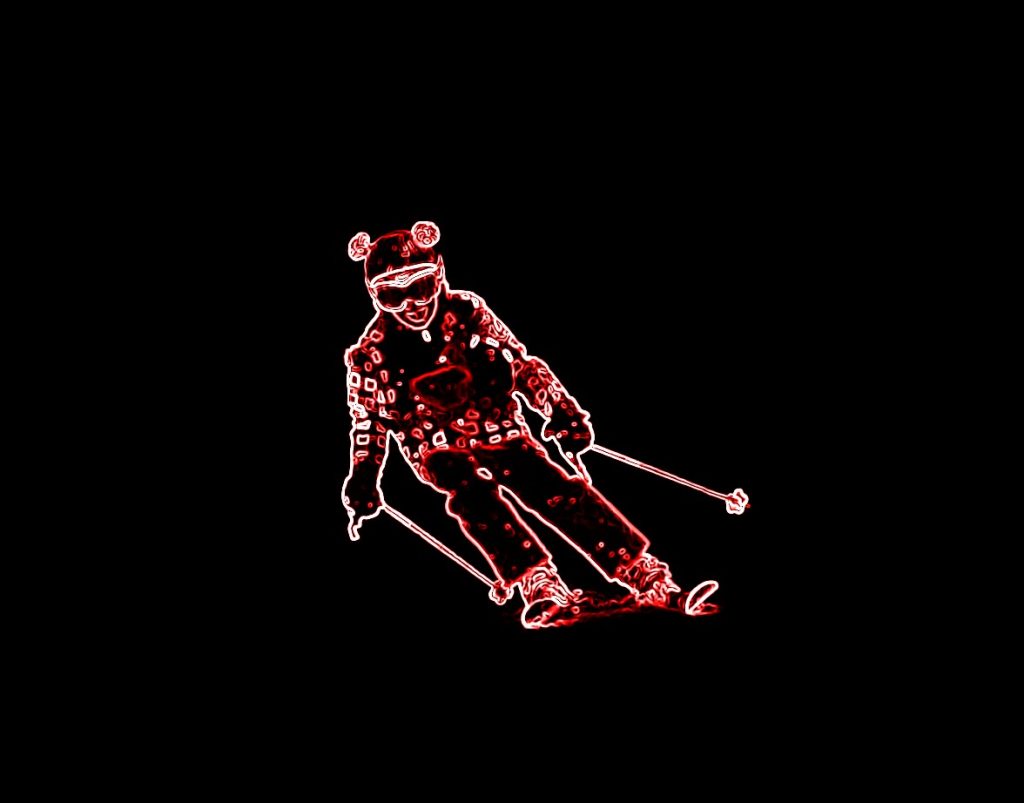 I’d promised Derin that we could do some slalom at some stage so this was the last opportunity that she would have. Slalom is very useful for learning, but it consumes a lot of time and it’s much better to spend time working on technique and then just test it out in slalom – which is why we had avoided it until now. Some people are not easy to coach on technique so slalom training can be a useful tool when other communication channels are not functioning well – but Derin had been responding extremely well to coaching and was improving faster outside of that gates then she would ever have improved through race training. The only advice I gave was to “anticipate” each turn early – like the pivoting in the bumps. Despite the course being hard and icy with some ruts Derin skied very confidently. The interesting thing was seeing her with her legs flexed and not stuck against the back of her boots. She was trying to carve as well. All the difficult work during the week focused on different ways to get off the back of the boots had really worked for her. On the second run she reduced the time to 38.82 seconds and could easily have reduced it much more later on after we had worked on “dynamics”.
I’d promised Derin that we could do some slalom at some stage so this was the last opportunity that she would have. Slalom is very useful for learning, but it consumes a lot of time and it’s much better to spend time working on technique and then just test it out in slalom – which is why we had avoided it until now. Some people are not easy to coach on technique so slalom training can be a useful tool when other communication channels are not functioning well – but Derin had been responding extremely well to coaching and was improving faster outside of that gates then she would ever have improved through race training. The only advice I gave was to “anticipate” each turn early – like the pivoting in the bumps. Despite the course being hard and icy with some ruts Derin skied very confidently. The interesting thing was seeing her with her legs flexed and not stuck against the back of her boots. She was trying to carve as well. All the difficult work during the week focused on different ways to get off the back of the boots had really worked for her. On the second run she reduced the time to 38.82 seconds and could easily have reduced it much more later on after we had worked on “dynamics”. Derin asked if I’d ever imagined a chairlift for one person. I explained that the universe was born spontaneously from a single seater chairlift about 70 years ago and that before that absolutely nothing existed. Derin then asked what a Universe is. That’s a good question. I explained that it’s the unimaginably big place in which we are completely lost. She then asked me “What is on the clock?”. This is a remarkably astute question because I could show her the answer – in contrast I explained that if she had asked me what the time was I’d have to tell her that I don’t know because nobody knows what time is. I pointed out to her that she exists in the present so her past can’t exist any more – so the person she was a minute ago can’t be there now. She replied that perhaps she was behind and so looked over her shoulder. It’s great when you can have better philosophical discussions with a 7 year old than with most adults. Only later was I informed that her name “Derin” means “deep”. She is very appropriately named.
Derin asked if I’d ever imagined a chairlift for one person. I explained that the universe was born spontaneously from a single seater chairlift about 70 years ago and that before that absolutely nothing existed. Derin then asked what a Universe is. That’s a good question. I explained that it’s the unimaginably big place in which we are completely lost. She then asked me “What is on the clock?”. This is a remarkably astute question because I could show her the answer – in contrast I explained that if she had asked me what the time was I’d have to tell her that I don’t know because nobody knows what time is. I pointed out to her that she exists in the present so her past can’t exist any more – so the person she was a minute ago can’t be there now. She replied that perhaps she was behind and so looked over her shoulder. It’s great when you can have better philosophical discussions with a 7 year old than with most adults. Only later was I informed that her name “Derin” means “deep”. She is very appropriately named.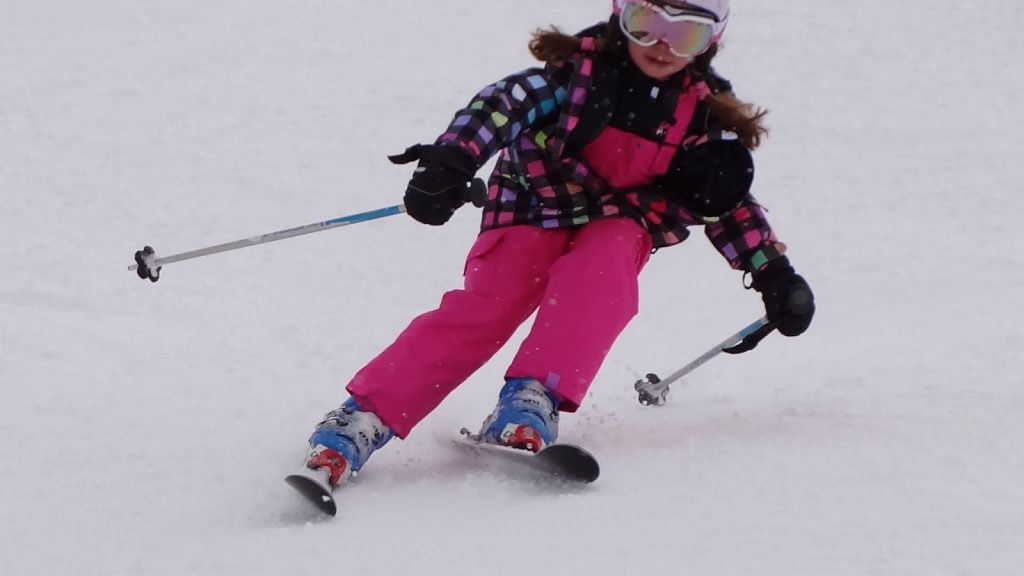 Dynamics
Dynamics Now that Derin’s stance was much stronger it was clear both in and out of the slalom that the next area to work on would be “dynamics”. I asked Derin if she remembered the “magic wall” that she had been taught about in the past. To my surprise she did remember and was able to explain it. She thought that the invisible wall had to always be uphill so I corrected this for her. The wall is downhill at the start of the turn and stays on the inside of the turn all the way around and you have to push even harder against it uphill towards the end. She hadn’t realised that you need to throw yourself against the wall “downhill” and this is why her dynamics were weak. She immediately improved her dynamics with this. There are a few runs working on dynamics in the video compilation. To begin with she used leg retraction – which is an advanced racing technique that she had stumbled upon by herself. I reluctantly “corrected” this because I wanted to see a clear strong movement pattern with lots of down and up movement. The aim was to move the centre of mass over the skis at the turn transition and the leg retraction is called a “cross under” because instead of the body going over the skis the skis go under the body. After this was corrected it was still clear that on steeper terrain Derin was failing to complete her turns. This is common with children because it is hard work finishing a turn and keeping speed under control because the forces are greatest at this point. Derin was able to correct this when it was explained to her – holding herself against the imaginary wall longer and stronger until the turn was completed. I explained that this is how she would hold a faster line in slalom even though it slowed her down here on the mountain.
Now that Derin’s stance was much stronger it was clear both in and out of the slalom that the next area to work on would be “dynamics”. I asked Derin if she remembered the “magic wall” that she had been taught about in the past. To my surprise she did remember and was able to explain it. She thought that the invisible wall had to always be uphill so I corrected this for her. The wall is downhill at the start of the turn and stays on the inside of the turn all the way around and you have to push even harder against it uphill towards the end. She hadn’t realised that you need to throw yourself against the wall “downhill” and this is why her dynamics were weak. She immediately improved her dynamics with this. There are a few runs working on dynamics in the video compilation. To begin with she used leg retraction – which is an advanced racing technique that she had stumbled upon by herself. I reluctantly “corrected” this because I wanted to see a clear strong movement pattern with lots of down and up movement. The aim was to move the centre of mass over the skis at the turn transition and the leg retraction is called a “cross under” because instead of the body going over the skis the skis go under the body. After this was corrected it was still clear that on steeper terrain Derin was failing to complete her turns. This is common with children because it is hard work finishing a turn and keeping speed under control because the forces are greatest at this point. Derin was able to correct this when it was explained to her – holding herself against the imaginary wall longer and stronger until the turn was completed. I explained that this is how she would hold a faster line in slalom even though it slowed her down here on the mountain.
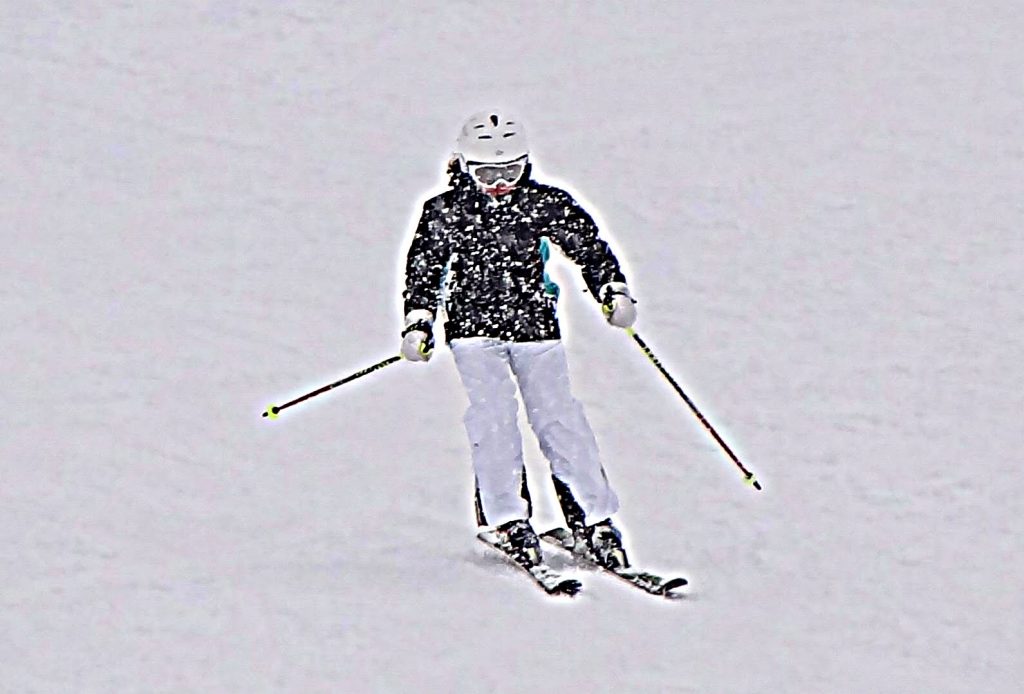 Recovery
Recovery Defne was clearly in a better frame of mind today having had an early night and a good sleep. Good “recovery” is the key to any athletic development. Unfortunately the weather and snow conditions were not so great in the afternoon once again. We went for a warm up ski through the fog into Val d’Isère. I was mainly aiming for slopes where we could work on carving and get Defne’s confidence back up again.
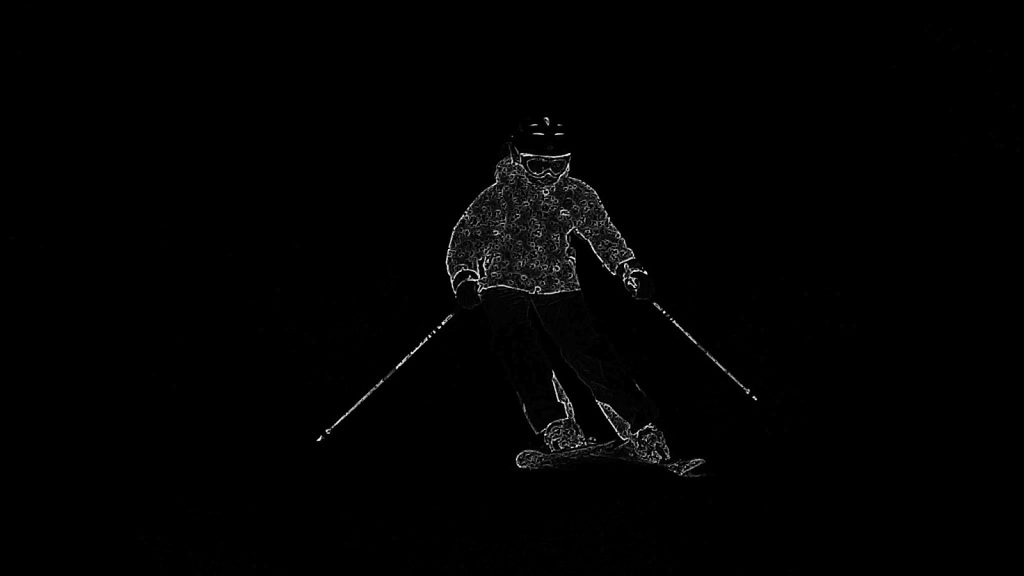 The main weakness in Defne’s carving has been the transition between turns but I hadn’t mentioned that until now. The key to improving this is to move the body cleanly from one side of the skis to the other with the skis simply rolling from edge to edge underneath. We did this as a static exercise to begin with. Denfe until now had slightly pushed the skis away from under her body to edge them at the start of each new carved turn. I reminded Defne of the work we did yesterday on the Centre of Mass and how it is the key to good skiing. Yesterday we worked on this in pivoting (with or without adductor muscle use). We need to learn how to move the Centre of Mass and how much to move it for each situation. Defne got the feeling of edge changing in this way and understood the difference.
The main weakness in Defne’s carving has been the transition between turns but I hadn’t mentioned that until now. The key to improving this is to move the body cleanly from one side of the skis to the other with the skis simply rolling from edge to edge underneath. We did this as a static exercise to begin with. Denfe until now had slightly pushed the skis away from under her body to edge them at the start of each new carved turn. I reminded Defne of the work we did yesterday on the Centre of Mass and how it is the key to good skiing. Yesterday we worked on this in pivoting (with or without adductor muscle use). We need to learn how to move the Centre of Mass and how much to move it for each situation. Defne got the feeling of edge changing in this way and understood the difference. Skating
Before heading down through the slush back into Tignes we worked on compression turns. This is a way of automatically getting the feet and knees ahead of the body. Now I wanted Defne to become more aware of the dynamics and timing involved and how the pivot works with it.
Accurate timing means that as soon as you start sinking down low you also start to pivot on both skis from the uphill edges. To achieve this you sink as you are in the process of planting the pole and it’s the body sinking and falling downhill that plants the pole and keeps pressure on it. The process is controlled by the motion of the Centre of Mass.
Initially Defne would either stand up instead of sinking, not sink enough or stand up after a slight sink. Eventually she got the range of motion and timing right.
Conversing with Legs
The deep slush near the bottom of the hill managed to put Defne in the back seat again and stiffen up the outside leg – leading rapidly to muscle fatigue. I reminded Denfe to pay close attention to what messages the leg was sending her – so that she could respond. Telling the leg to relax means bending it slightly when all it wants to do is go straight.


